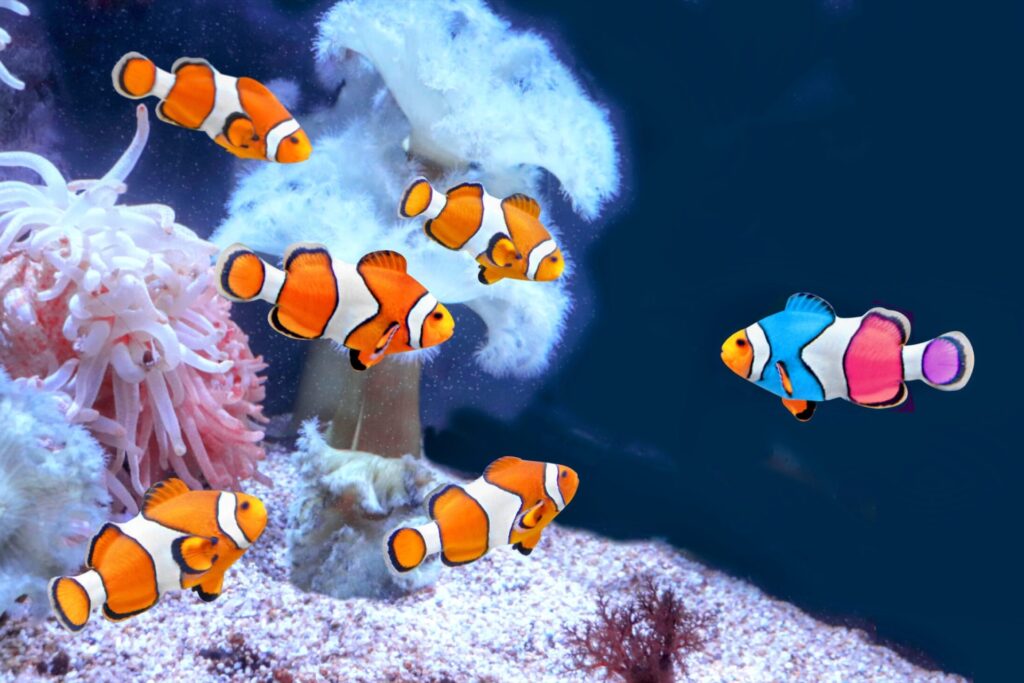Clownfish, despite the lovable personality nemo In Finding Nemo, he is probably best known for his white stripes. Looks like we’re not the only ones noticing this pattern. A new study shows that clownfish can detect the same number of white lines as their own in other clownfish; This means that clownfish can probably use rudimentary line counts to identify friends and foes.
Brian Butterworth, a neuroscientist at University College London, says the skill of counting in the animal kingdom is defined by finding more food or safety on a group scale. But the clownfish may have discovered another “value” in numbers: the ability to identify and identify other fish.
A new study in Journal of Experimental Biology published, show that clownfish can count up to three lines on other fish and, by doing so, are able to identify potential threats to their home and group social order.
Clownfish may look very cute, but they are very aggressive and violent. When they see a member of their species target the tentacles of their anemone house and move towards it; They attack the aggressor, bite him and make him run away.
Clownfish identify enemies by counting lines
Attacks are not limited to other fish. Justin Rhodes, a marine neuroscientist at the University of Illinois at Urbana-Champaign, says he was once bitten by a clownfish while diving and the bite was so severe that he bled. He added: “Clown fish are one of the most aggressive animals on our planet; But it is the newcomers of their own kind who threaten the social order of the group. “The clownfish don’t want anyone to come in and take their place in the group.”
However, there are 28 different species of clownfish. The question is how these animals make friends from enemies They recognize?
Kina Hayashi, a marine ecologist at the Okinawa Institute of Science and Technology, has long studied the relationship between clownfish lines and their ability to identify them. Depending on the species, the clownfish can have zero to three stripes, and these stripes usually run from the belly to the spine or from the nose to the tail. Previous research shows that fish pay close attention to these patterns. Hayashi in A study in 2022 found that clownfish spent more time biting and chasing wooden baitfish with the same number of lines as themselves.
Hayashi then had a question: Can clownfish really count lines? Therefore, he and his colleagues 50 common clownfish (Amphiprion ocellaris) young and reared in the laboratory were placed in separate aquariums. Common clownfish are orange in color and have three white stripes like Nemo. Then, the researchers added another common clownfish and three different species of lab-bred clownfish to the tank individually as invaders. All clownfish were protected in odor-proof and transparent boxes.
Interspecies invaders had various combinations of orange and black stripes and one to three white stripes; For example, one of them had a mink-like band on his head. The “native” fish in the tank could not chase or bite the invaders, but they could still jump and stare at them in a hostile manner. This happened when the newly arrived clownfish had the same number of white lines as the natives.
Then, Hayashi’s team placed another 120 common clownfish in groups of three in separate aquariums. After a week of familiarization, each group of clownfish got to know the fourth “fish”; An orange resin bait, either solid and solid, or painted with one, two, or three vertical white lines outlined in black. The researchers suspended the fake fish in the tanks using fishing line.
Clownfish use counting skills to protect their homes from intruders.
Hayashi says the stripes were clearly important to the clownfish. Clownfish aggressively chased and bit the three-line bait ten times more than unlined fish. Attacks on three-line baits were two times more than single-line models and 1.3 times more than two-line models.
Hayashi’s team reports that based on the study’s findings, clownfish not only can count, but also use this skill to defend their homes against other fish of their own species.
Rods says the study shows how clownfish specifically recognize members of their own species and distinguish them from others. However, he questions whether these fish are actually counting, or just noticing more white on the attacking fish. Hayashi replies that this is unlikely; Clownfish in previous studies did not show a reaction to white color alone.
“Further research will determine the computational capacity of clownfish,” says Butterworth. A test that goes beyond the stripes; For example, could these fish learn to prefer two squares to three?”
The researchers add that it makes sense that fish have such useful skills to defend their territory. Hayashi says that if he can prove that clownfish can actually count, the next step is to find out if they are born with the ability. If this ability is not innate, maybe they learned it in school like we did?


